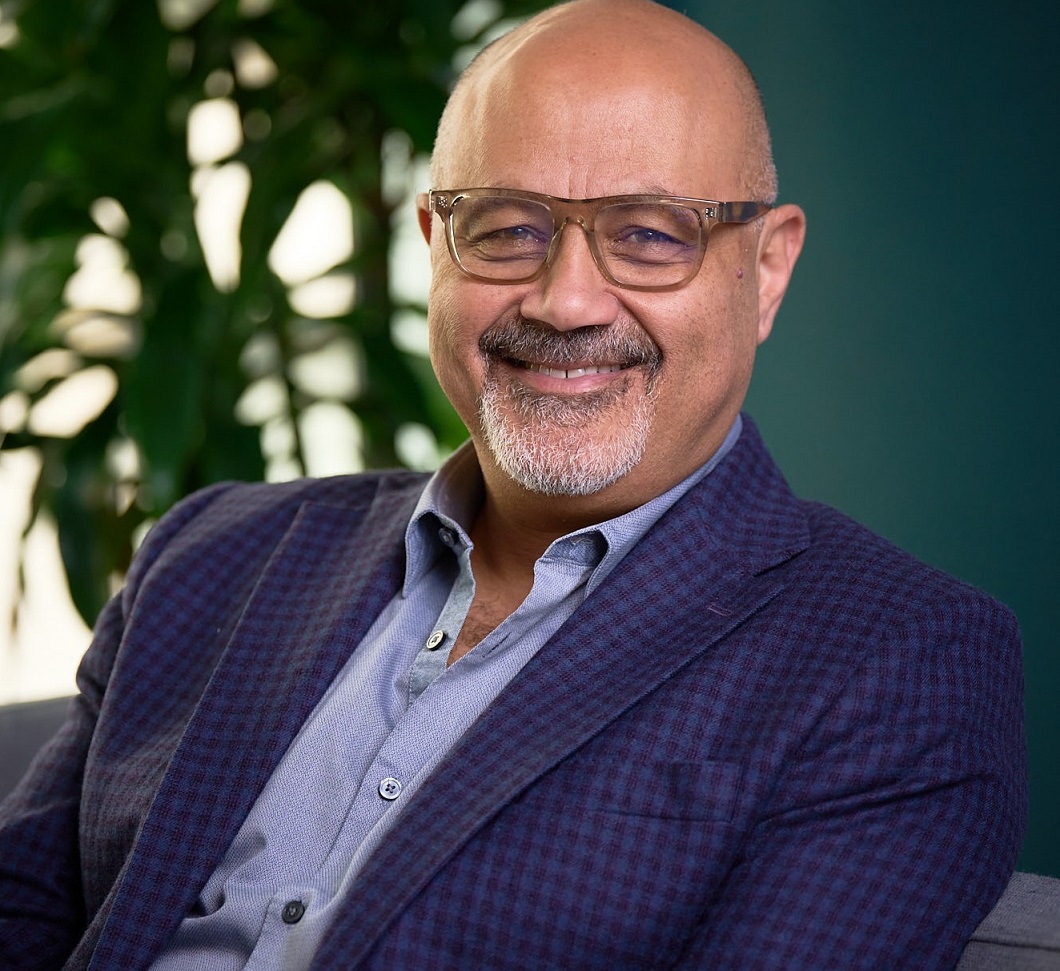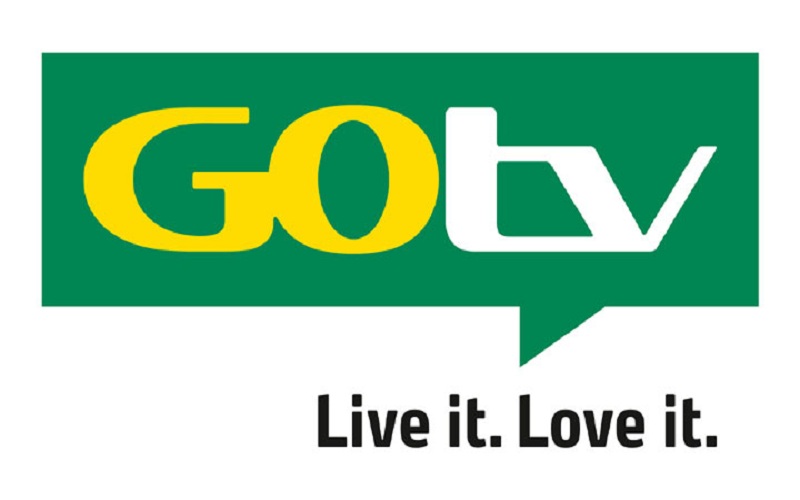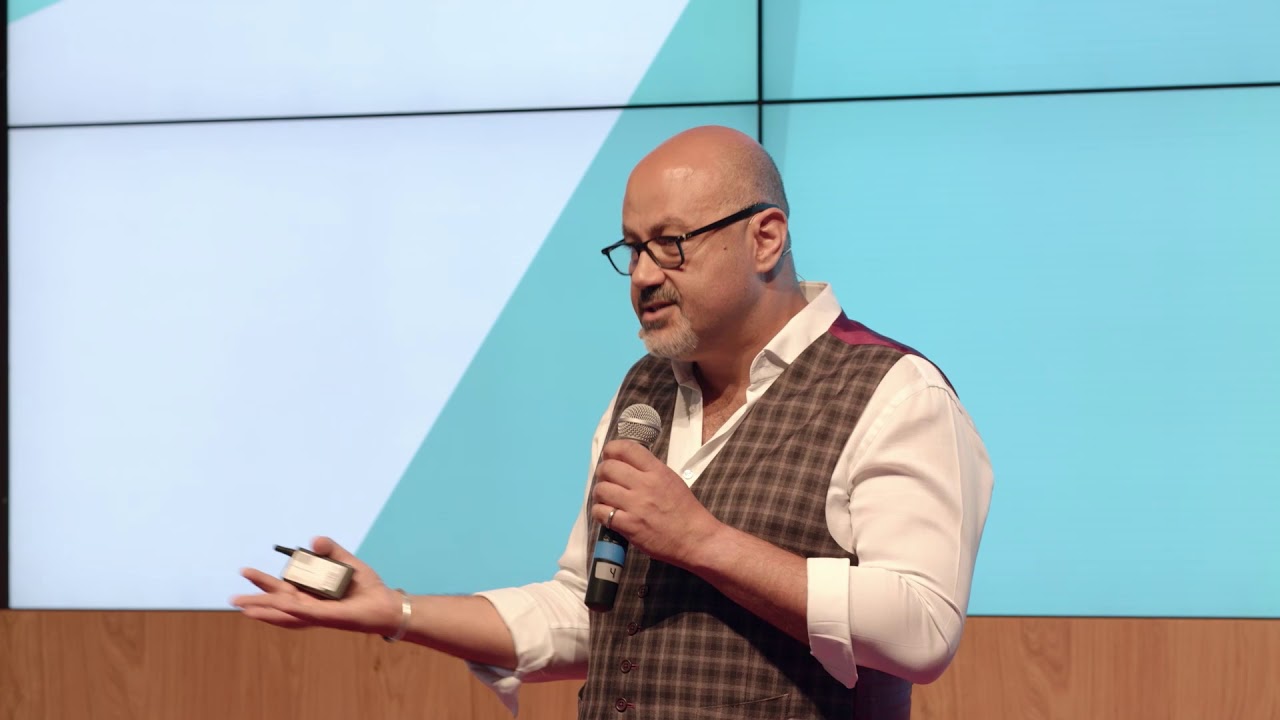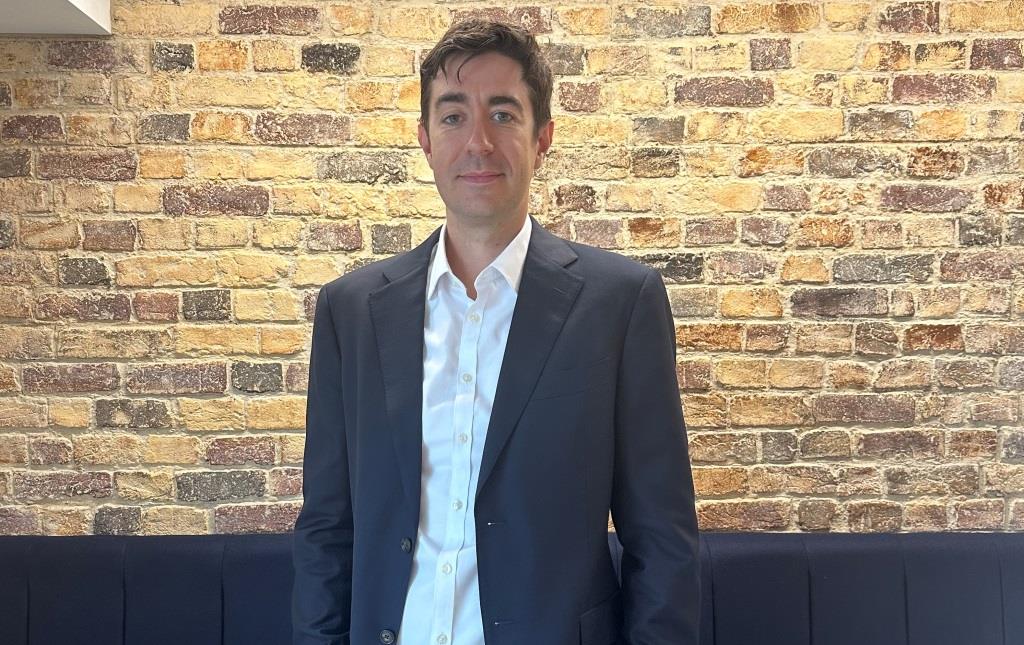Feature/OPED
The Most Valuable ‘White Spaces’ Today in African Investing

By Victor Basta
In the vast and diverse landscape of African growth investing, more opportunities abound today than ever before. Africa’s recent growth surge has created a large group of companies already scaling successfully, while the current market environment has reduced the capital available. This untapped potential between high-quality investment “demand” and reduced capital “supply” extends to various commercial sectors, including logistics, HR, and insurance, all presenting significant high-value “white spaces” waiting to be filled. For those looking to invest in Africa, especially in high-growth, digitally-driven companies, these markets offer immense potential.
African Investment In Developed Digital Sectors
Africa’s digital sectors are leading the way in terms of economic viability on the continent. These sectors encompass fintech, tech-enabled commerce (such as logistics, supply chain, mobility, digital health, and education), and renewable energy. These industries revolve around key themes like financial inclusion, climate change mitigation, and poverty alleviation.
With low manufacturing capabilities, high youth unemployment rates, poor-quality health care, and inadequate infrastructure, Africa’s sustained growth now depends on its digital economy. Crucially, the continent has historically exhibited a remarkable ability to “leapfrog,” for example by embracing a mobile-first approach and swiftly adopting digitally managed renewable energy. This digital-first mindset, often born out of necessity, has made these sectors essential employers, providing opportunities for the millions of Africans entering the job market annually.
A Growing Investment Landscape
In recent years, investment in African start-ups has surged, exceeding $5 billion in 2021. However, this figure has dipped sharply due to global macroeconomic issues and specific African challenges. Despite this growth, two significant “white spaces” continue to exist in the African investment landscape.
The first gap is in the range of $10-25 million scale-up funding rounds. The second is the lack of customised, structured non-equity financing to support company growth. Notably, because the vast majority of African investments are impact or mission-driven, focusing on positive social and economic change, this provides a natural path to overlay specific investors’ objectives, such as gender-lens investing, climate positivity, or financial inclusion.
The $10-25 Million Funding Gap
In the chart below, based on proprietary research, we can see the number of investors active in Africa categorised by the size of their investments. On the left are the traditional African start-up investors, usually committing less than $5 million. To the right are investors, including international or regional players, whose criteria demand larger investments, usually exceeding $20 million. This gap between $5-20 million is where relatively few investors are actively engaged, creating a significant opportunity for future investments.

There is a yawning gap:
Several forward-thinking funds have recognised this gap and are adapting to address it. Investors like Norrsken, Partech, and TLCom have or will naturally raise larger funds to support these companies’ growth. Simultaneously, the number of quality African companies qualifying for such funding is on the rise, leading to increased demand that will outstrip the capital supply for many years. This persistence in the funding gap presents a compelling investment opportunity.
Structured Financings in Africa
Non-equity capital is still in its early stages of development in Africa. Typically, local currency debt is primarily offered by banks, but these institutions are known for being burdensome, expensive, and reluctant to support companies looking to invest in growth, which naturally reduces profitability in the short term. Moreover, their financial products tend to be relatively basic and are usually accessible only to larger, well-established businesses at the top of the economic hierarchy.
Dollar-denominated debt, on the other hand, is available in various forms, with a significant portion originating from Development Finance Institutions (DFIs) or similar organisations. However, the innovative financial structures and speed of execution required in Africa are often lacking from these sources.
This issue is compounded by the fact that many African companies, particularly those aiming for growth, rely at least in part on selling money in some form to generate profits in their operations. This can take the form of financing productive assets like motorcycles, mobile phones, solar pumps, or even embedded finance such as providing financing to retailers for weekly stock replenishment, funding agricultural inputs with guaranteed off-take, or supporting the deployment of POS terminals for agent banking. We estimate that over 70% of African scale-up businesses generate income through these “money resale” activities.
This dependence on money resale for income makes it financially impractical to rely solely on equity financing. Equity returns are typically around 30% annually, while financing margins, especially for commercial financing, are usually much lower. Consequently, companies cannot afford to “burn” capital in this way to simply fuel growth.
Examples of this kind of capital are diverse. They include payments companies seeking up to $10m to support the purchase and distribution of POS terminals to contracted merchants, providers of renewable power products looking to transfer an initial $20 million+ of dollar-indexed receivables generated from three markets to an off-balance sheet Special Purpose Vehicle (SPV), with the potential to expand to $40-50 million to enhance liquidity, and even large companies looking to finance a second year of market entry through a mix of debt and equity, since banks typically require 2-3 years of evidence before lending the first $, even if a client has $100m+ of revenue already.
This structured finance gap is often filled by DFIs, which, while invaluable to the African ecosystem, may not be an ideal fit for most growing companies. They tend to be cumbersome, and inflexible, demand extensive reporting, and have less tolerance for the dynamic evolution of growing businesses. Although some flexibility has been introduced in recent years, the need for structured finance remains unmet across the continent, necessitating earlier risk-taking and a faster response time than current providers can offer.
Victor Basta is the CEO of DAI Magister
Feature/OPED
Taxation Without Representation

By Dr Austin Orette
The grandiosity of Nigerians when they discuss events and situations can be very funny. If the leaders use this kind of creativity in proffering solutions, we may be able to solve some of the problems that plague Nigeria perennially.
There seems to be a sublime affectation for new lingos when the system is being set to punish Nigerians. It is a kind of Orwellian speak.
Recently, there was no electricity throughout the country. The usual culprit and government spoke; people came out to tell us the power failure was due to the collapse of the National grid. Does it really matter what is collapsing? This is just an attempt by some government bureaucrats to sound intelligent.
Intelligence is becoming a borrowed commodity from the IMF or World Bank. What does it mean when you tell Nigerians that the national grid collapsed? Is that supposed to be a reassurance, or it is said to give the assurance that they know something about the anemic electricity, and we should get used to the darkness. This is a language that is vague and beckons the consumer to stop complaining. Does that statement mean anything to Nigerians who pay bills and don’t see the electricity they paid for? If they see it, it comes with an irregular voltage that destroys their newly purchased appliances. Just tell or stay quiet like in the past.
Telling us that a grid collapse is a lie. We have no national grid. Do these people know how silly their language sounds? Nigeria produces less than 10,000 megawatts of electricity for a population of 200 million people. How do you permutate this to give constant electricity to 200 million people? It is an insult to call this low output a national grid. What is so national about using a generator to supply electricity to 200 million people? It is simple mathematics. If you calculate this to the minute, it should not surprise you that every Nigerian will receive electricity for the duration of the blink of an eye. They are paying for total darkness, and someone is telling them they have an electricity grid.
If you can call the 10,000-megawatt national grid collapsed, it means you don’t have the mind set to solve the electricity problem in Nigeria.
To put it in perspective is to understand the basic fact that the electrical output of Nigeria is pre-industrial. Without acknowledging this fact, we will never find solutions as every mediocre will come and confuse Nigeria with lingos that make them sound important.
It is very shameful for those in the know to always use grandiose language to obfuscate the real issues.
South Africa with a population of sixty million produces about 200,000 megawatts of electricity daily. Nigeria produces less than 10,000 megawatts. Why South Africa makes it easy to lift the poor from poverty, Nigeria is trying to tax the poor into poverty.
The architects of the new tax plan saw the poor as rich because they could afford a generator.
A non-existent subsidy was removed, and the price of fuel went through the roof. Now the government says they are rich. What will they get in return for this tax extraction? Why do successive Nigerian governments always think the best way to develop Nigeria is to slap the poor into poverty? What are the avenues for upward mobility when youth corps members are suddenly seen as rich taxpayers? Do these people know how difficult it is to start a business in Nigeria?
After all the rigmarole from Abuja to my village, I cannot get a government certificate without a-shake down from government bureaucrats and area boys. The government that is so unfriendly to business wants to tax my non-existing businesses. Are these people in their right state of mind? Why do they think that taxing the poor is their best revenue plan? A plan like this can only come from a group of people who have no inkling of what Nigerians are going through. People can’t eat and the government is asking them to share their meager rations with potbellied people in Abuja.
Teach the people how to fish, then you can share in their harvest. If an individual does what the government is doing to Nigerians, it will be called robbery, and the individual will be in prison. When the government taxes people, there is a reciprocal exchange. What is being done in Nigeria does not represent fair exchange.
Nigerians have never gotten anything good from their government except individual wealth that is doled out in Abuja for the selected few.
The question is, will Nigerians have a good electricity supply? NO. Will they have security of persons and properties? No. Will they have improved health care? NO. Will there be good roads? No. Will they have good schools and good education? No.
Taxation is not good governance. A policy like this should never be rushed without adequate studies. Once again, our legislators have let us down. They have never shown the people the reason they were elected and to be re-elected. They are not playing their roles as the watchdog and representatives of the people. Anyone who voted for this tax bill deserves to lose their positions as Senators and Members of the House of Representatives.
We are not in a military regime anymore. Nigerians must start learning how to exercise their franchise. This taxation issue must be litigated at the ballot box. The members of the National Assembly have shown by their assent that they don’t represent the people.
In a normal democracy, taxation without representation should never be tolerated. They must be voted out of office. We have a responsibility and duty to use our voting power to fight unjust laws. Taxation without representation is unjust. Those voted into power will never respect the citizens until the citizens learn to punish errant politicians by voting them out of office. This responsibility is sacred and must be exercised with diligence.
Dr Austin Orette writes from Houston, Texas
Feature/OPED
Why GOtv Continues to Shape Nigeria’s Home Entertainment Culture

For many Nigerian families, GOtv has become more than a television service. It is part of the daily routine. It is what people unwind with after a long day, what keeps children entertained on quiet weekend mornings, and what brings households together during football matches, movie nights, and festive celebrations. Over the years, GOtv has blended naturally into these everyday moments, shaping the way Nigerians enjoy entertainment at home.
Here are some of the reasons GOtv continues to stand out.
1. Local Content That Feels Like Home
Nigerians love stories that reflect their lives, and GOtv delivers this consistently. With Africa Magic, ROK, and other local channels, viewers enjoy Nollywood movies, relatable dramas, reality shows, and lifestyle programming that speak their language. These are familiar faces, familiar stories, and familiar experiences. GOtv understands the value of cultural connection and continues to invest in the content viewers care about.
2. Affordable Packages That Work for Real Families
GOtv has built its reputation on affordability. With packages designed for different budgets, families can enjoy quality entertainment without financial pressure. Some of the affordable packages on GOtv include GOtv Jinja, GOtv Jolli, GOtv Max, GOtv Supa, GOtv Supa Plus. This balance of good content at a comfortable price is a major reason GOtv remains a trusted household name across Nigeria.
3. A Channel Lineup That Has Something for Everyone
The beauty of GOtv is its range. Children enjoy their cartoons and animated shows, parents relax with movies and telenovelas, sports lovers stay connected to live games and highlights, and music and lifestyle channels keep the energy lively. Whether it is catching up on the news, finding something light after work, or choosing a family movie for the weekend, GOtv fits naturally into everyday Nigerian life.
4. Programming That Matches Our Daily Rhythm
GOtv understands the way Nigerians watch television. Weeknights come with easy to follow entertainment, weekends offer longer movies and marathons, and festive seasons arrive with special programming that brings everyone together. The schedule is practical, familiar, and aligned with the pace of Nigerian homes.
5. Easy Access Across the Country
From major cities to smaller communities, GOtv remains reliable and easy to use. Installation is straightforward, navigation is simple for both adults and children, and the service works seamlessly across the country. Even when life gets busy, GOtv makes it easy to stay connected, subscribers can pay and reconnect instantly without long processes or penalties, picking up right where they left off.
With relatable content, pocket-friendly pricing, and a channel lineup built around real Nigerian lifestyles, GOtv has earned its place in homes across the country. As the entertainment landscape evolves, GOtv continues to grow with its viewers, shaping how Nigerians watch, share, and enjoy moments together every day.
Feature/OPED
Tegbe Highlights Benefits of Nigerian Tax Reform Acts

Chairman of the National Tax Policy Implementation Committee (NTPIC), Mr Joseph Tegbe, has enumerated the benefits of the Nigerian Tax Reform Acts 2025, stating they mark a significant turning point in the country’s pursuit of a robust and sustainable economy.
In an article published in several national publications, Mr Tegbe said the tax laws were a comprehensive overhaul of the country’s fiscal architecture, aimed at creating a modern, efficient, and transparent tax system that supports economic growth, development, and prosperity for all Nigerians.
The NTPIC chair, who is also the Director-General of the Nigeria-China Strategic Partnership (NCSP), affirmed that the new tax laws are built around four key pillars: reconnecting the economy to the state, standardising and modernising fiscal administration, promoting predictability, and re-balancing the fiscal social contract.
“By broadening the tax net, simplifying rules, and improving administration, we are creating a more predictable fiscal environment that supports businesses and households,” he explained.
He cited global best practices that informed the reforms like South Korea, Singapore, and Rwanda, where tax reforms have driven economic growth and development.
“These countries have shown that with the right policies, institutions, and leadership, it is possible to transform a nation’s economy and improve the lives of its citizens,” he said.
According to him, the tax reform will protect low-income earners and small businesses, with measures such as zero tax rates for those earning up to N800,000 and the expansion of zero-rated VAT items for critical sectors, including healthcare, education, and agriculture.
“By taking away the tax burden on small income earners and small businesses, the reforms aim to preserve livelihoods, encourage formal participation, and allow enterprises to grow organically. We recognise that these sectors are critical to our nation’s development, and we are committed to supporting them,” he noted.
The Acts also emphasise digitalisation and technology-driven tax administration, with the introduction of e-invoicing to improve compliance, transparency, and reduce administrative burdens, a significant step towards modernising the tax system and making it more efficient, he posited.
Consequently, he emphasised that the success of the reform depends on careful implementation, necessitating ongoing engagement with stakeholders to ensure proper understanding.
The implementation of the tax Act is expected to stabilise the fiscal environment, support production, protect critical sectors, and modernise tax administration in line with global standards, adding it will also enhance Nigeria’s ease of doing business, attract foreign investment, and generate employment opportunities.
“We are confident that these reforms will unlock new opportunities for businesses, investors, and entrepreneurs, and contribute to the growth and development of our economy,” he added.
-

 Feature/OPED6 years ago
Feature/OPED6 years agoDavos was Different this year
-
Travel/Tourism9 years ago
Lagos Seals Western Lodge Hotel In Ikorodu
-

 Showbiz3 years ago
Showbiz3 years agoEstranged Lover Releases Videos of Empress Njamah Bathing
-

 Banking8 years ago
Banking8 years agoSort Codes of GTBank Branches in Nigeria
-

 Economy3 years ago
Economy3 years agoSubsidy Removal: CNG at N130 Per Litre Cheaper Than Petrol—IPMAN
-

 Banking3 years ago
Banking3 years agoFirst Bank Announces Planned Downtime
-

 Banking3 years ago
Banking3 years agoSort Codes of UBA Branches in Nigeria
-

 Sports3 years ago
Sports3 years agoHighest Paid Nigerian Footballer – How Much Do Nigerian Footballers Earn



















